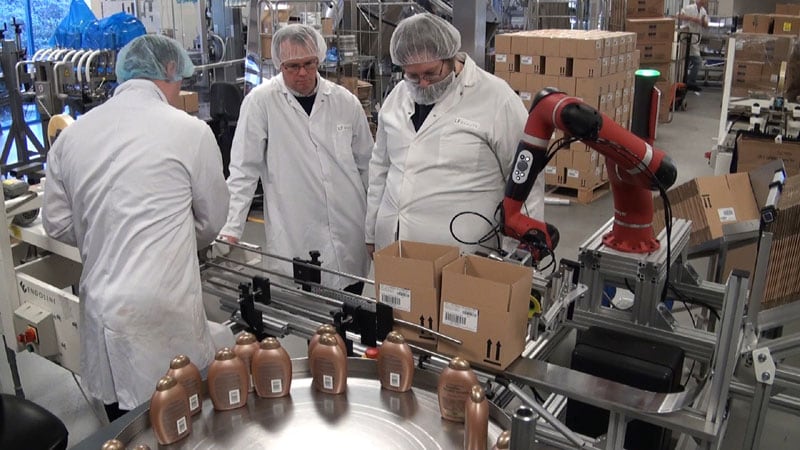
The truth about smart collaborative robots?
We all know robots have been around for a long time used in a variety of industrial processes, such as those used by car manufacturers to streamline their assembly process and improve productivity. These industrial robots are super-fast, accurate and can be scaled to suit almost any task, however they take time to implement by specialist integrators and as a consequence are expensive and inflexible to changes in their working environment.
But unlike traditional industrial robots, collaborative robots, often referred to as cobots or co-robots are used in lighter, slower, repetitive manually handling tasks that would usually be carried out by people. Often these unstimulating repetitive tasks can be trained into a cobot by the line operative without any specialist knowledge freeing the operative to do more rewarding work.
What about the media hype that robots will take jobs?
Well companies have been manufacturing industrial robots for decades to do just that, fuelled by other companies wanting to reduce costs and increase profitability. However, there is an opportunity with the introduction of collaborative robots to improve the lot of operatives carrying out, dull, repetitive, often sole destroying tasks, that are best suited to robots. The new breed of cobots work alongside trained operatives who tend the cobots and in our experience are embraced by line operatives and employers alike.
We need to work smarter and invent new ways of doing things and absolutely embrace new technology that historically has shown over time improves all our lives and leads to better living standards. Smart people use smart tools to do their work more efficiently, smart cobots are just another tool to help us achieve more, improve working conditions, while improving safety in the work place.
How do collaborative robots improve safety?
The unique safety characteristics of collaborative robots mean that people can work alongside cobots within a defined area without caging; where the collaborative robot and human can perform tasks together simultaneously. There is quite a lot required to achieve this, power and force limiting, force monitoring and an assessment of the task and environment needs to be considered. Active8 Robots can help determine the suitability of a cobot for any given task and provide any necessary compliance documentation and CE certification.
So, what is a smart collaborative robot?
All cobots are not created equal, most have six axis or degrees of freedom unlike a human arm that has seven degrees or freedom. Also most cobots don’t include integrated vision and task oriented force feedback, meaning its often necessary to spend considerably more on external accessories supplied by third party vendors. However, there is one collaborative robot that has a seven-axis arm, fully integrated vison system, force feedback that can be used in tasks requiring manual dexterity. Sawyer the smart collaborative robot from Rethink Robotics.
To find out more about collaborative robots and how they can help your business continue to prosper talk to Active8 Robots the collaborative robot experts.
